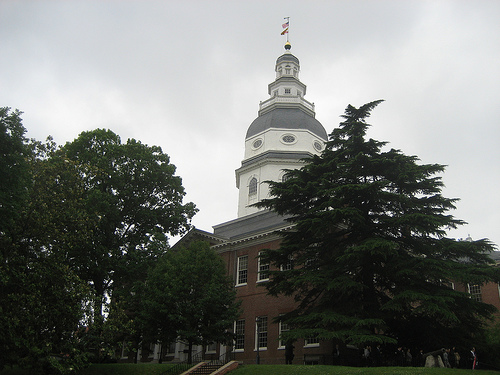Did you know? Maryland joined the growing ranks of US states with their own broadband offices nearly a year ago.
The Digital Connectivity Act passed in April 2021 established the Office of Statewide Broadband (OSB), with a goal to get all Marylanders connected to high-speed, affordable broadband internet by 2026. It was also tasked with administering the $300 million in funding from the federal government’s American Rescue Plan that Maryland allocated toward the expansion of affordable and reliable internet across the state. Kenrick Gordon, previously the state’s director of the Maryland Office of Rural Broadband, was later named director of the OSB.
Last month, Gordon sat on a panel with representatives from broadband infrastructure developer Crown Castle and internet service providers AT&T and Comcast to talk about where government and private companies intersect on broadband access in Maryland.
In Maryland, the digital divide leaves one in four households without a home wireline broadband subscription. This panel hosted at the 2022 Advocacy Summit by the Maryland Tech Council was a glimpse into the mindset and policy agenda of how the head OSB sees the goal of bringing affordable internet to all residents of Maryland to fruition.
The panel included Christopher Carroll, regional director of external and legislative affairs for AT&T; Tiffany Harvey, VP of government and regulatory affairs for Comcast; and Karmen Rajamani, VP of government affairs at Crown Castle. They discussed the impacts of regulation on the industry and what each feels Maryland’s legislature needs to keep in mind regarding policies on broadband infrastructure and ISPs.
Here’s what Gordon had to say about his office’s priorities, grant opportunities and the nitty-gritty on download speeds:
Maryland’s Office of Statewide Broadband on private vs. public broadband
For those wishing for municipal broadband, or hoping that broadband will be treated like something akin to a utility, note that measures that take private ISPs out of the equation isn’t what the OSB is looking for.
Instead, Gordon said he feels that private companies know best how to build out and maintain a broadband network. Funding private ISPs is what he believes works best for the foreseeable future.
“Its been my office’s policy that we encourage private investment and private expansion,” Gordon said.
Grant funding from the office in 2022
Gordon broke down funding opportunities coming out of the OSB in 2022 to provide internet connectivity in Maryland, including the Neighborhood Connect Grant and the Network Infrastructure Grant.
It also includes the more individual-focused $15-a-month subsidy for in-home internet called the Maryland Emergency Broadband Benefit; think of it as the state equivalent of the Affordable Connectivity Program. Both of those broadband internet subsidies can be applied to a household to receive a $45 discount each month toward their internet cost. A household enrolled in the federal program is automatically enrolled by ISPs in the state program. The state program lasts for 12 months but is expected to continue for another year, as the OSB has additional funding for the program, Gordon said.
The Neighborhood Connect Grant is for municipalities in Maryland to extend internet service to unserved areas in their communities. It’s a program that’s best for small projects and existing broadband infrastructure, with a grant awards between $50,000 and $500,000. The program received 62 application totaling $17.8 million in grant requests and $24.9 million in construction costs, according to Gordon; however, the program only has $13 million available.
Meanwhile, the Network Infrastructure Grant is for large projects that are creating new broadband infrastructure. That funding goes directly to ISPs, and grants awarded range from $1 million to $10 million. The program received $258 million worth of applications and over $300 million in construction costs, Gordon said.
What is high-speed broadband internet, actually?
If you’re talking to the FCC, it’s 25 Mbps download and 3Mbps upload — speeds set in 2015 that Gordon doesn’t agree with when considering the modern demands that work, school and leisure put on internet service.
The new American Rescue Plan Act puts guidelines in place that for broadband programs to receive funding, speeds should be 100 Mbps download and 25 Mbps upload. Gordon, though, think speeds closer to 100 Mbps download and 100 Mbps upload, or a bare minimum of 20 Mbps. And in a perfect computer engineer’s word, download and upload speeds would be a gig.
“I think 100 by 20 for most households is probably going to work for the next several of years,” Gordon said. “As long as we build scalable projects, then we can always increase that speed.”
Watch the panel discussion below:







